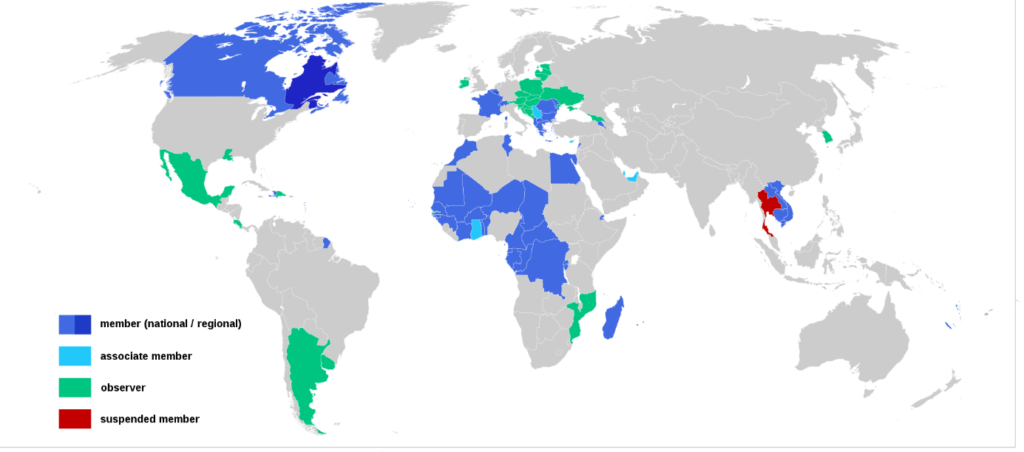by Gaël Malin
As a way to kick off our “French month”, it seems almost of a prerequisite to review the current state of French as a language around the world. French is an official language in 29 countries, spanning across four continents, namely Europe, Africa, America, and Oceania. With about 270 million speakers worldwide—80 million native speakers and 190 million secondary speakers—French ranks 5th among most spoken languages. And the number of speakers is steadily growing, with African countries account for more than half of the total.
When dealing with a language, reflecting on the history and culture behind it is as essential as learning the language itself, as they are all closely intertwined in intricate ways.
French is a Romance language, i.e. derived from Vulgar Latin, along other languages including Spanish, Italian, Portuguese, and Romanian. Modern French dates to the 16th century, with French becoming the language for all official documents in the Kingdom of France. It was also commonly used on the diplomatic stage and within European courts. The spread of French in Europe was boosted by the considerable cultural influence the country still wields today.
As with other European languages, French was imported to many countries around the globe through colonisation. The French colonial empire was first established in the 16th century and expanded over the next centuries until complete dismantling, in the second half of the 20th century. French-colonised territories included North America, mainly Canada and Louisiana, most of North Africa, West Africa, and Equatorial Africa, and Vietnam (former ‘Indochina’).
French-led efforts have pushed for the promotion of the language worldwide and building closer ties between French-speaking countries as part of the Francophonie (French-speaking world). This has resulted in the creation of the Organisation Internationale de la Francophonie (International Organisation of La Francophonie) in 1970, aiming to coordinate these actions. French speakers celebrate and promote French through various events on French Language Day, which is held every year on 20th March.

Map of the International Organisation of the Francophonie
For all the initiatives encouraging its use, some have come to see French as an “endangered” language under the grave threat of English. English has long replaced French as the prime trade language, a position further strengthened under the effects of globalisation. In many areas, French seems to have lost ground to English, whether it is in the fields of marketing or IT, or in everyday conversations. In efforts to counter the influence of English, the Government of Quebec has introduced many policies to protect what is considered a crucial part of the province’s identity. The debate rages and is not likely to close as communications and cultural exchanges have reached unparalleled levels. Languages are known for their porosity after all.
These questions notwithstanding, French remains one of the most spoken languages worldwide, sustained by a very much palpable soft power. France is the world’s most visited country—its culture radiating in numerous fields—and a leading economic power in aeronautics and aerospace, pharmaceutics, beverages, perfumes and cosmetics, and so on. It is also home to many renowned brands, as well as international organisations. As such, French is a major language on the translation market.

With that in mind, French is hardly the so-called ‘language of love’, but there is no doubt this reputation will endure.

